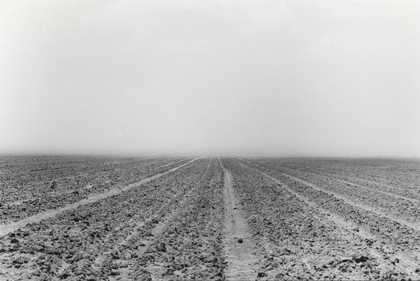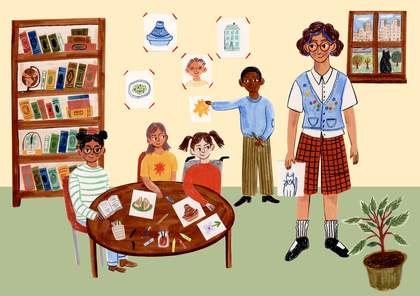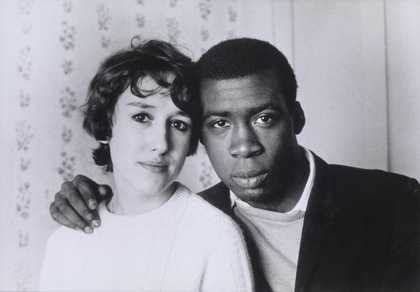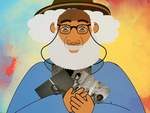
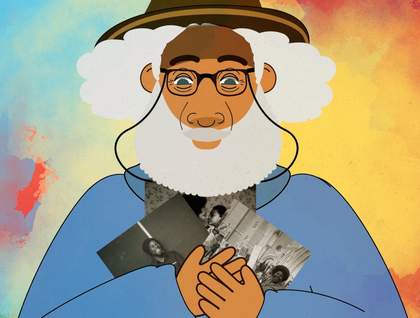
Charlie Phillips
Meet the photographer who takes powerful images about migration, community and forgotten histories
Content Guidance
This video discusses anti-black racism and shows examples of the racist signs and graffiti Charlie Phillips encountered in his life. We suggest teachers assess the suitability of this resource for their students
about the video
Encourage your students to respond to the film in their own ways – perhaps by making notes, doodles or drawings, or through gestures and sounds
Find out about Charlie Phillips and why he decided to become an artist through this bright, colourful animation
"I just wanted to capture images of people living their everyday lives"
Charlie Phillips
Phillips was born in Kingston, Jamaica and travelled to England on a ship after the Second World War. He grew up in Notting Hill in West London and is part of the Windrush Generation. Phillips taught himself to be a photographer by playing around with a camera and learning from his mistakes. He says you don't need to go to art school to become an artist, you can teach yourself instead!
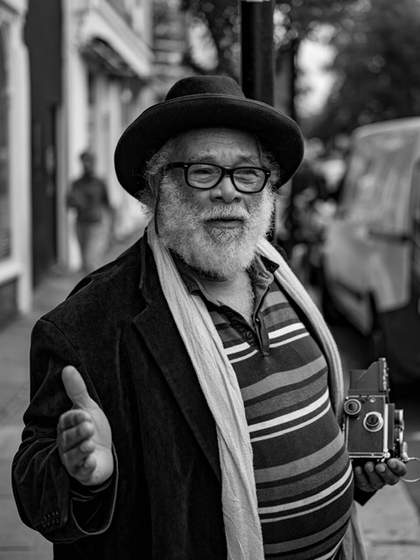
Portrait of Charlie Phillips, 2020. Photo © Misan Harriman
Discuss
Your students' ideas and experiences are the best starting point for any discussion. Using the prompts, support meaningful and creative discussions in the classroom about the film’s key themes. Discover how Charlie Phillips’s practice can inspire your students to learn with art.
Community and Forgotten Histories
Phillips takes photographs of people and events in his community. His photographs capture the everyday lives of Black working-class people in West London. In the video, Phillips describes his photographs as capturing ‘forgotten parts of London history’.
PROMPTS
- Why do you think an artist might want to take photos of their community?
- What are all the things that photographs of ‘everyday lives’ might include? What is ‘everyday’ for you?
- If you could capture life in your community, who would you capture and why? Who or what would you like to make sure is not forgotten?
Migration and the Windrush Generation
The Windrush Generation are the many people who moved from the Caribbean to the UK to make a home between 1948 and the 1970s. In the film Phillips explains that, whilst he didn’t travel on Empire Windrush – the ship that became the symbol of this period of migration – he is still considered part of the Windrush Generation.
PROMPTS
- What do you know about the Windrush Generation? What would you like to find out about this period of British history?
- What do you remember of Phillips's experiences of arriving in Britain from the film? How do you think these experiences shape the art that he makes?
- Migration has happened for many thousands of years and for many different reasons. Why do you think people move between places? How do you think migrating from one place to another might make people feel?
‘Doing it Yourself’
Phillips taught himself to be a photographer by playing around with a camera and practising over and over. In the film he says, ‘I didn’t go to art school. I just read, practised and learned from my mistakes’.
Prompts
- What is the first thing you think of when you imagine ‘art’ or being an ‘artist’? Did anything about Phillips's journey to becoming an artist surprise you?
- Why do you think an artist might choose, or need, to ‘do it yourself’?
- If you could teach yourself something from scratch – what would it be and why?
How to use artist stories
Introduce art and artists into your classroom with Artist Stories resources. The resources combine engaging videos and thoughtful discussion points to encourage confidence, self-expression and critical thinking. Art is a powerful tool for discussing the big ideas that impact young people's lives today.
- Explore the video:
- Read About the video to introduce the artist to your students.
- Project the video or watch it in smaller groups.
- Each video is between 3–10 minutes.
- Transcripts are included where available
2. Discuss the video:
- Select discussion prompts from the lists to frame your conversation.
- Use a mix of individual reflection, pair work and group discussion.
- Use one set of prompts to explore a theme in depth or shape your discussion across different themes.
- Discussion prompts can also be used in a Q&A format.

